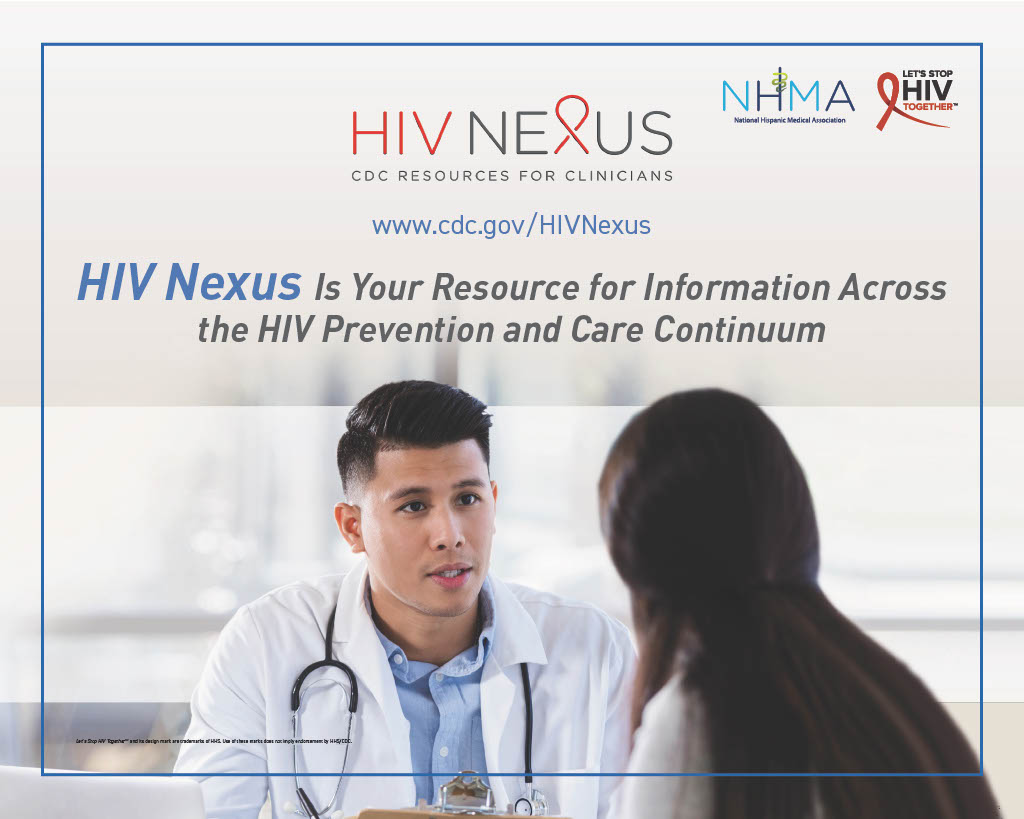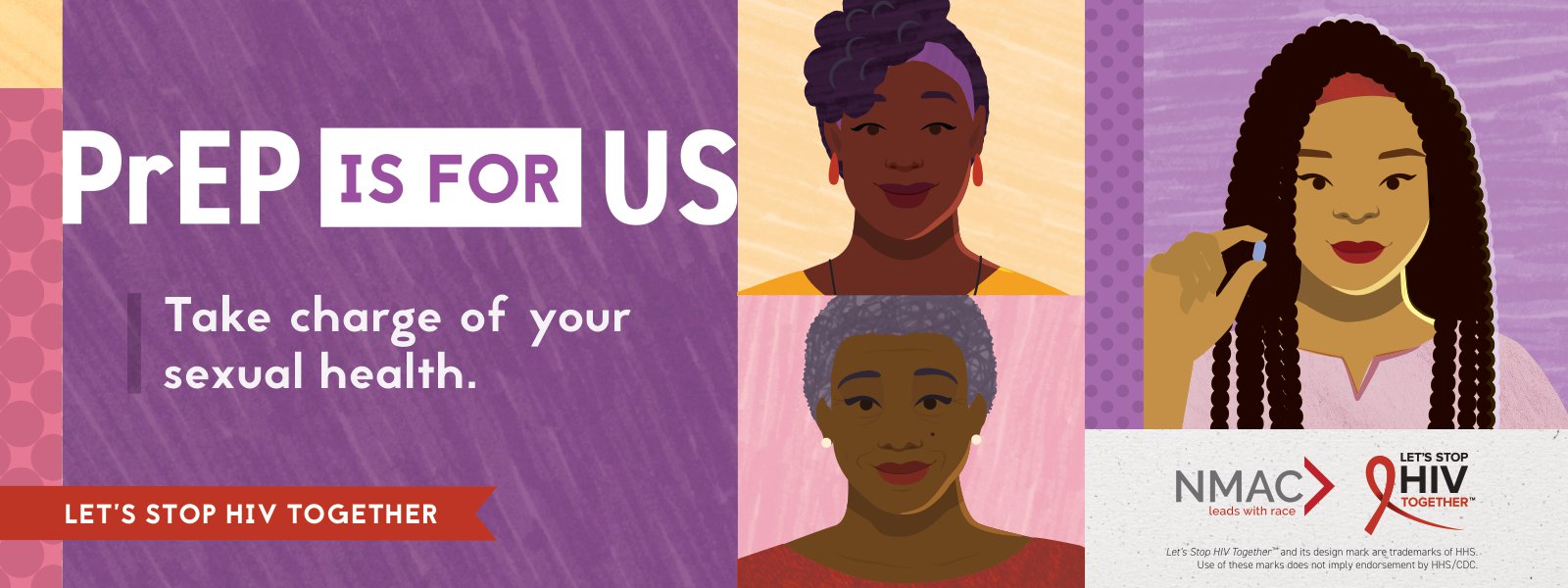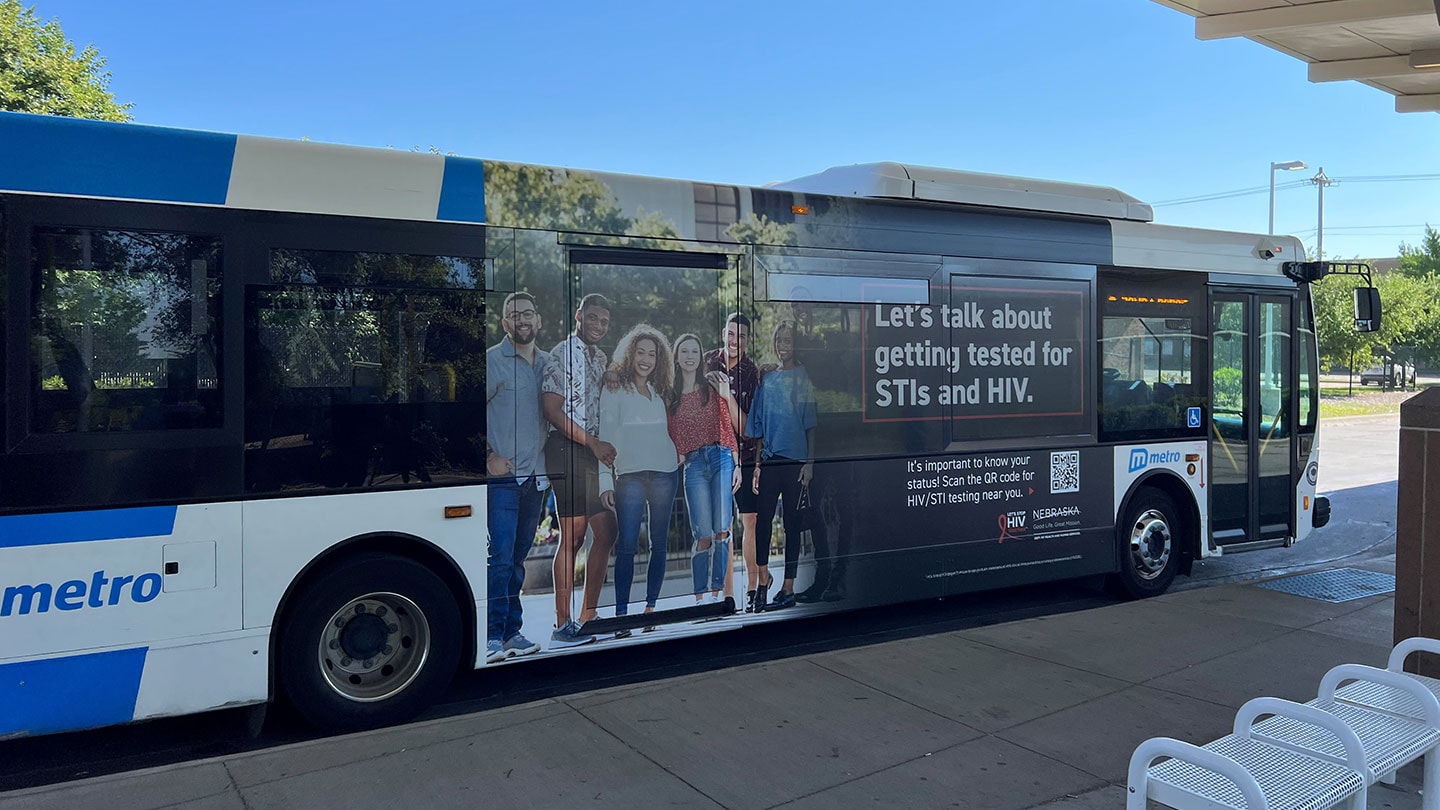Social Marketing Toolkit

Social Marketing Guidance
Social marketing is the use of marketing theory, skills, and practice to achieve social change, promote general health, raise awareness, and induce changes in behavior. Community mobilization models for HIV prevention include social marketing campaigns.
Social marketing is critical to ensuring not just awareness of your programs and services, but also that they reach people where they are to help bring them to where they need to be mentally, emotionally, socially, and physically.
Set Your Communications Objectives and Create Your Social Marketing Plan
To effectively implement a social marketing campaign, you’ll want to undertake the proper health communications preparation, execution, and follow-up so you can ensure your communications and social marketing efforts succeed. Follow the steps below to boost your success. These steps draw on the CDCynergy social marketing tool at CDCynergyLite.pdf. This tool is based on best practice social marketing principles, and assists in developing, implementing, and evaluating an effective social marketing plan. The tool takes you step-by-step through the process, giving you instructions on “What It Is” and “How It Is Done.” Also included are appendices that contain useful charts, forms, and questions to help one move through the planning process (please note that while this tool is very useful, it is an older product and there are a few links in the Tools and Templates sections to ORAU (Oak Ridge Associated Universities) that no longer work).
- Problem description: What is the problem you are trying to address? Knowing this helps you keep the main goal of your social marketing effort top of mind. Articulating the problem clarifies what the public health problem is, who is affected, and what you propose to do to address it. A full, clear problem description and analysis can help you decide whether to undertake a social marketing effort.
- Market research: Also called consumer or audience research, this step is designed to enhance your understanding of your target audience’s characteristics, attitudes, beliefs, values, behaviors, determinants, benefits, and barriers to behavior change in order to create a strategy for social marketing programs.
- Market strategy: This is a plan of action for your entire communications and social marketing program. Market strategy encompasses the specific target audience segment(s), the specific desired behavior change goal, the benefits you will offer, and the interventions that will influence or support behavior change.
- Interventions: These are methods you use to influence, spur, or promote behavior change. Social marketing interventions tend to take four forms, reflecting the strategy used to achieve the desired outcomes: 1) service interventions create or modify services, tests, or treatments to improve health; 2) product interventions create or modify a product that promotes health; 3) policy interventions lead to regulatory, legislative, or organizational rulings that supports improvements in the public’s health (for example, your coalition might be successful in advocating for city funding for bike lanes); and 4) communication interventions inform and influence individual and community decisions about behavior that enhances health.
- Implementation: This is the point at which all your planning and preparation come together. Among the activities critical to your program’s success are planning the launch, holding a news event, taking advantage of unexpected opportunities, and defusing potential threats to your efforts.
- Evaluation: Effective program evaluation is a systematic way to improve and account for public health actions by involving procedures that are useful, feasible, ethical, and accurate.
The Let’s Stop HIV Together Campaign Helps You Accelerate Your Efforts
CDC’s Let’s Stop HIV Together (Together) campaign provides materials and resources to programs across the country working to end HIV. Our evidence-based approach ensures our materials and messages are understood, acceptable, and effective with priority audiences. This means your organization can avoid spending valuable resources developing HIV-related materials from scratch.
This toolkit provides you with direct access to the campaign’s ready-made and customizable materials as well as information on technical assistance to help you customize and co-brand. You’ll also find guidance on how to strategically use and evaluate Together resources to boost your impact in communicating about HIV testing, prevention, treatment, and stigma.
Collaboration has benefits! When you work closely with the Together campaign, you can access co-implementation assistance, which brings extra advertising funds and support to your jurisdiction so your dollars can go further.
The Together campaign also offers technical assistance at each stage of your campaign, from planning and strategy to designing your evaluation plan. We invite you to join forces with us and let the Together campaign work for you.
Let’s Stop HIV Together is the national campaign of the Ending the HIV Epidemic in the U.S. (EHE) initiative and the National HIV/AIDS Strategy. An evidence-based campaign, Together aims to empower communities, partners, and health care providers to reduce HIV stigma and promote HIV testing, prevention, and treatment.
CDC has applied communication science, invested significant resources, and developed the national campaign to help programs at the local level accelerate their efforts to end the HIV epidemic.
Why Use Together Campaign Materials?
Using Together’s evidence-based campaign materials and technical assistance can amplify your efforts and resources. Examples of opportunities you can tap into include:
- Using our ready-to-go, audience-specific communications materials.
- Tailoring and updating materials to meet your specific needs.
- Co-branding Together campaign materials to include your logo.
- Co-implementing your campaign with us with both sides investing in ad placements.
- Receiving assistance with the evaluation of your campaign’s performance.
- Ordering free Together campaign print materials through CDC-INFO, such as posters, brochures, fact sheets, and toolkits.
Because the Together campaign has already invested in formative research during the development process to ensure that our materials and messages are effective, your organization can focus on promotion and dissemination. You can also partner with us to co-implement your campaign to further extend your reach and your paid media budget. For example, your spending could focus on local out-of-home advertising (transit ads, billboards), events, and organic or boosted social media. The Together team could add resources for geo-targeted digital advertising and/or paid social media ads. The result can be a higher-impact effort.
Give your marketing efforts a boost! Let the national campaign enhance your HIV prevention outreach and marketing efforts. Contact us at stophivtogether@cdc.gov to learn more.
Co-Brand and Tailor
The Together campaign offers technical assistance to help partners co-brand and/or tailor campaign materials. Our easy process is designed to help you use the right materials to fit your needs.
First, identify the right materials for your campaign. Review our campaign portfolio in English and Spanish and search by format, topic, or key audiences. We can work with you to select the best campaign assets to meet your goals.
After identifying the right materials for your campaign, consider co-branding, which allows you to add your logo next to the Together logo. Review the co-branding examples below and note that we can also customize materials to use your program’s QR code, website, or other specific information.
The best part? We do the co-branding graphic work for you! We strive to make co-branding as quick and easy as possible for partners.
Examples of Co-Branded Products:
Ready to start? Reach out to our team (stophivtogether@cdc.gov) to make a request for co-branding and tailoring campaign materials.
We’re here to help. We may be able to assist in meeting your needs while adding to our portfolio. Just ask. Contact us at stophivtogether@cdc.gov to discuss tailoring or developing materials for your campaign.
Co-Implement
In addition to co-branding and tailoring materials for you, we may be able to co-invest/co-implement in your area. Working together, we can help you plan your campaign using our expertise in:
- Audience segmentation
- Digital media buys
- Search engine marketing
- Social media (organic, boosted, and ad buys)
- Events marketing (Pride events and more)
The Together campaign also regularly works with social media influencers to help reach key audiences. We can give you tips on how to connect and work with influencers—including strategies for selecting influencers, contacting them, creating content, and more—so you can engage your communities and extend the reach of your campaign.
The best part? We can potentially coordinate our own ad buys with you so that we can disseminate similar messages in the same place at the same time.
You’ve got a partner! Contact us at stophivtogether@cdc.gov and let CDC partner with you to co-implement Together in your community.
Evaluate
The Together team has extensive experience in campaign monitoring and evaluation to help in showcasing the results of your campaign investment and effort.
CDC recommends monitoring performance data in the following areas:
- Media buys, such as impressions, click-through rates, cost per thousand, cost per click, and traffic to site.
- Social media, including number of followers/growth in followers, reach, engagement, and changes in engagement rate.
- Materials distribution, including the type and number of materials ordered and distributed.
- Events, including the type and number of events and number of attendees.
Additionally, there may be other data points of interest based on your communication program and evaluation questions, such as monitoring traffic to your organization’s website. When evaluating your efforts, it is important to consider all the key components that align with your overarching communications goals and objectives.
Here for you! Let the campaign support your monitoring and evaluation efforts. Contact us at stophivtogether@cdc.gov to find out how we can help.
Together Materials at Your Fingertips
The Together campaign’s portfolio includes hundreds of items in various print and digital formats—covering all the key HIV topics and directed to numerous audience segments and priority populations for consumer and provider audiences. See what materials are available to your program in the chart below or visit the Together campaign resources library to see a full selection.
Whatever your campaign involves, Together can accommodate your communication needs. Choose from a variety of formats, including:
Together also offers ready-to-use social media toolkits and Awareness Day toolkits that include posts in both English and Spanish for you to use on Facebook, Twitter, Instagram, Snapchat, and other platforms.
Select from a variety of topics in our campaign portfolio, including:
- Condoms
- Drug Use
- General Awareness
- Inclusive Care
- PEP
- PrEP
- Prevention
- Self-Testing
- Sexual Health
- Stigma
- Testing
- Treatment
- Undetectable Is Prevention
Trying to reach a specific population group? Together has you covered as materials can be sorted by audience:
Together Key Resources for Consumers
Getting the right materials and messages to reach your consumer audiences has never been easier with the Together campaign’s portfolio of resources.
Free and easy! You can access the Together campaign’s consumer resources, including videos, banners, palm cards, and other materials in the Together campaign resources library. Use the search box or filters to find specific resources. You can filter materials by campaign resource name, language, topic, audience, and format.
Together Key Resources for Clinicians
Health care professionals are a key audience in helping stop HIV. You can reach this audience by using the Together campaign’s free resources, tools, and messages for clinical audiences.
Free and easy! You can access the Together campaign’s clinician resources, including banner ads, posters, brochures, and other materials in the Together campaign resources library. Filter your search by “Clinicians” in the “Filter by Audience 1” box. The Together campaign also has an excellent selection of patient materials for clinicians to use to educate their patients. Materials range from “Understanding Your HIV Test Results” brochures to “Now’s the Time to Find Out About PrEP and PEP” products.
CDC’s HIV Nexus is a tool built for clinicians, providing them with the latest scientific evidence, guidelines, and resources on screening for HIV, prescribing PrEP and PEP, and providing treatment to people with HIV. Consider pointing your clinician audience to this valuable resource.
Additionally, there are digital resources for health care providers and provider associations to use with their peers and association members about best practices for HIV screening, treatment, and prevention.
Want to stay up to date on the Together campaign and the latest additions to the portfolio? Subscribe to the Together monthly e-blasts. Each month, the Together campaign delivers to your inbox the latest news, resources, and information that you can use to communicate about HIV testing, prevention, treatment, and stigma. Visit CDC.gov/StopHIVTogether and click on “Get Email Updates” in the left navigation (under “Follow Let’s Stop HIV Together”). This will lead you to the CDC email subscription page, and all you need to do is enter your email address, and you will be subscribed to Together emails.
Raise Awareness with HIV Awareness Days
Raise awareness all year. HIV Awareness Days are powerful focal points to rally around and leverage for HIV communication. Including and observing HIV Awareness Days in your communications plans is one effective way to connect with people in the community all year long. Observed annually, the 12 Awareness Days supported by the Together campaign offer an opportunity to educate the public and encourage them to know their status, get treatment, and make decisions for living healthy and active lives.
Because HIV Awareness Days let you connect with different audiences throughout the year, they are great opportunities to deliver campaign messaging and resources. From posting on social media to hosting Awareness Day events, you can rely on an array of materials from our campaign portfolio or Awareness Day toolkits to support your efforts.
Using Together Materials in Your HIV Prevention Campaign
Now that you know what the Together campaign offers and how you can use it to co-brand, implement, and evaluate, below are a few examples of how to use Together materials to enhance your HIV prevention efforts.
WHY
If you know where your audiences are (geographically as well as digitally), using paid and donated advertising can help you reach them there.
IDEAS
- Work with the Together team to turn posters and palm card formats into billboards, transit ads, and other out-of-home placements.
- Use Together campaign web banners to buy digital ads.
- Use campaign videos for a paid video campaign on YouTube.
- Use Together’s audio or video ads for paid digital or terrestrial radio ad placements; ask local TV and radio stations to run them as PSAs.
- Use Together print materials for an ad in a magazine or newspaper.
WHY
Organic and paid social media gives you access to priority audiences on an ongoing basis, fosters conversations, and allows you to link audiences to key information, resources, and services.
IDEAS
- Use posts and graphics from our many social media toolkits to promote HIV prevention, testing, treatment, and anti-stigma messaging to your social media audiences. Download our social media animated graphics, static images, memes, videos, and more to share on platforms or use in social media ad buys or boosts to elevate messages.
- Tap into our Awareness Day social media toolkits with posts in English and Spanish to help you reach bilingual audiences.
WHY
Events offer opportunities to speak one-on-one with priority audiences. These conversations allow you to raise awareness, educate, and distribute materials that audiences can use to stay informed.
IDEAS
- Work with us to create co-branded Together palm cards to hand out at gatherings and events.
- Use co-branded Together materials in your booth at Pride. Hand out anti-stigma pledge cards or play Together
- Together offers technical assistance with on-site signage and pull-up banners to bring to your next event, such as a film festival.
- Share Together brochures and posters with clinicians to display in their offices.
WHY
The different Awareness Days offer powerful focal points to rally around and to promote prevention and treatment of HIV.
IDEAS
- Prioritize key audiences by promoting HIV Awareness Days using social posts and graphics from our Awareness Day toolkits.
- Sponsor a virtual event, like a webinar or Facebook or Instagram Live, in support of an Awareness Day and promote HIV testing, prevention, treatment, and anti-stigma resources using Together
- Use Together social media posts—both those for consumers and providers—to leverage each Awareness Day.
Be sure to follow our social media channels for the latest news, posts, and information from the campaign on HIV testing, treatment, prevention, and stigma reduction.
- Instagram: @StopHIVTogether
- Instagram: @StartTalkingHIV
- Facebook: @StartTalkingHIV



